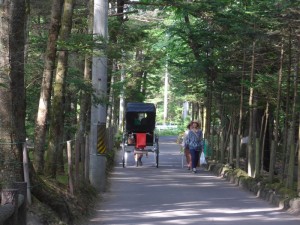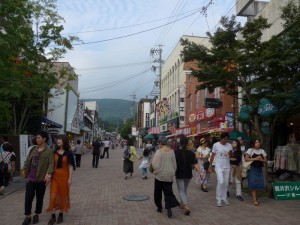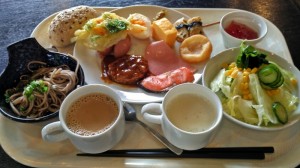Karuizawa & Tokyo & Remarks: August 10 -12, 2016
August 10 Wednesday: Karuizawa
Judia and Kai have been thinking of spending a couple of days in Karuizawa after Nikko. They say the best way to appreciate the place is to relax: one should stroll in the wood and drink coffee in roadside cafes. But the exorbitant hotel price ranging from USD300-600 a night, had put us off. Located along Japan’s Romantic Road at the foot of the active volcano Mount Asama at an altitude of roughly 1000m and about 160km from Tokyo, Karuizawa was first discovered and promoted as a mountain resort by western residents in the late 1800s.
The area is excellent for outdoor activities year round and for the foliage. There are several attractions nearby including Kyu-Karuizawa旧軽井沢, Naka-Karuizawa中軽井沢 (4km west of Kyu-Karuizawa), manyarts museums, hot springs, theShiraito Waterfall measuring three metres high and 70 metres wide and the Onioshidashi Park featuring a landscape of volcanic rocks that were deposited during the 1783 big eruption of Mt Asama. Today, many wealthy urbanites own a second home here.
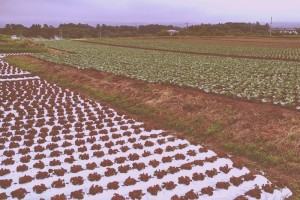 |
|
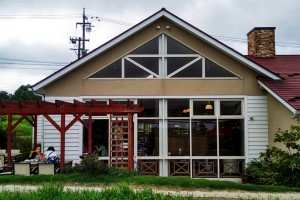 |
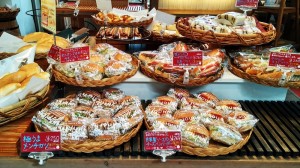 |
I had a leisure day in Karuizawa. After a full breakfast in the hotel, I walked to the railway station which is not far. I discover my hotel is next to a main road in a rural area. I watched farmers working in the field. The ride to Karuizawa is slow giving me a chance to look at the enchanting rural landscape.
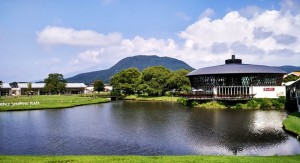 |
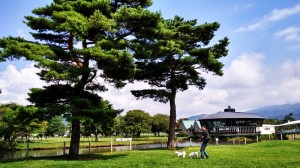 |
After getting off the train, I decided to check out the posh upmarket Prince Shopping Plaza. I am not a shopper but like this mall built around a large park and pool. Around 11 am, I walked to the other side of the railway line towards Kyu-Karuizawa. First I stopped in a local eatery restaurant for a set lunch for ¥1,600. The salad with local ingredients and spaghetti are delicious.
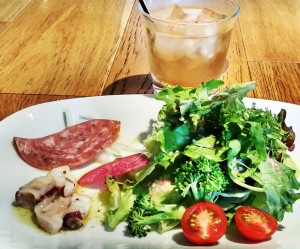 |
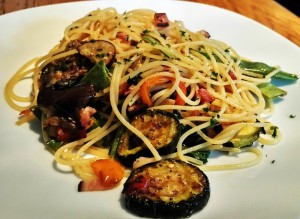 |
I enjoy discovering Karuizawa on foot. I visited the Karuizawa New Art Museum and paid ¥1500 to see an exhibition Avant – garde Shock on Shozo Shimamoto. I am not impressed by the artist’s work.
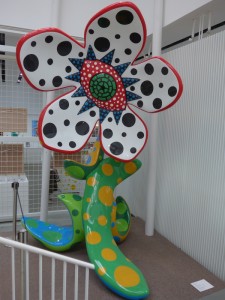 |
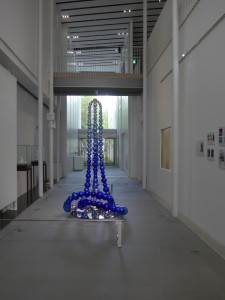 |
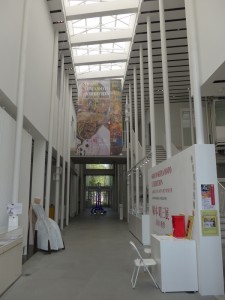 |
After leaving the main street, I discovered the secret and beauty of Karuizawa: charm, tranquility and peace with forested residential houses in western style or rustic wood cabins scattering in the woods. Karuizawa is romantic: there are several small churches which I guess must be popular for wedding ceremony. Biking is another popular way to explore the town. But I would not do it as the lanes are narrow with many cars and recreational cyclists.
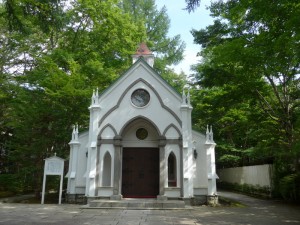 |
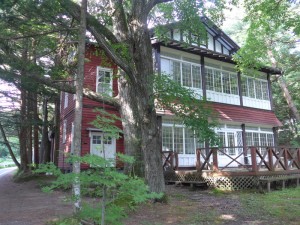 |
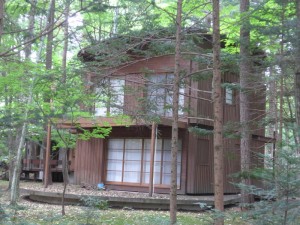 |
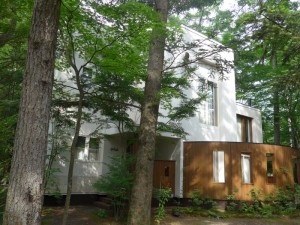 |
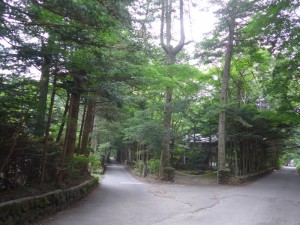 |
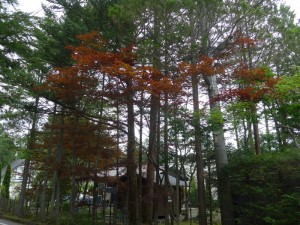 |
I spent over an hour wandering aimlessly in the wood before reaching the Mampei Hotel built in Tudor architecture. In the museum, I saw pictures of John Lennon who was a frequent visitor before his death.
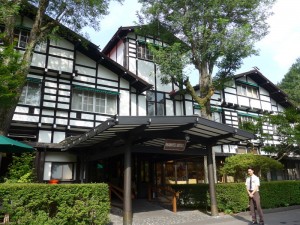 |
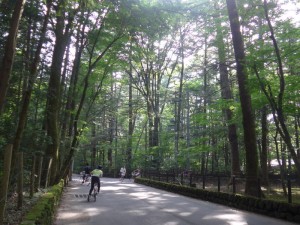 |
I followed the Good Humor Road along the Yagasaki River and arrived at the Shaw Memorial Church built by missionary Alexander Shaw who built the first holiday villa and church here.
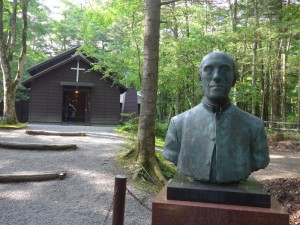 |
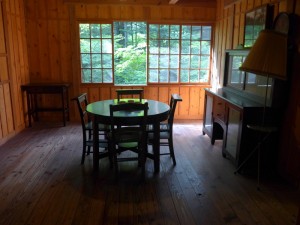 |
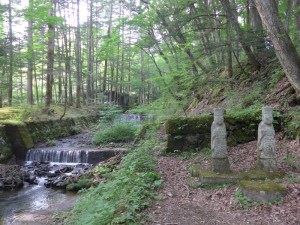 |
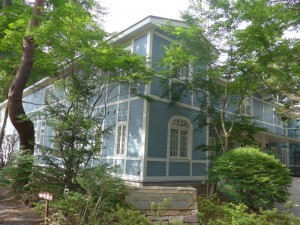 |
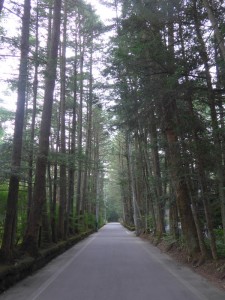 |
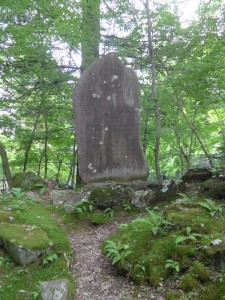 |
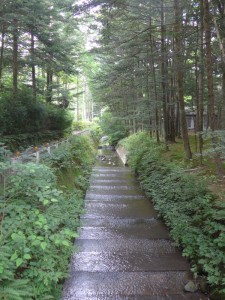 |
A short distance from the church is the spot with the statute of Muro Saisei, a poet. I finally arrived at the shopping street of Kyu-Karuizawa,a former post town along the Nakasendo Route, linking the imperial capital Kyoto with the shogunal capital Edo (present day Tokyo) during the Edo Period. I was tired but continued to walk to the Kumoba Pond which is said to be a nice spot for autumn colours.
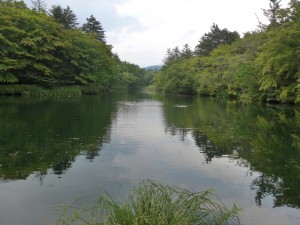 |
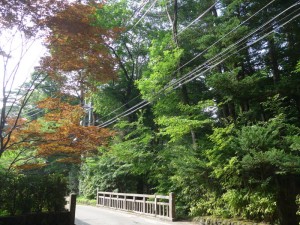 |
My feet were aching by the time I reached the railway station. Unfortunately the 6pm train just left and I had to wait half an hour. So I returned to the bar restaurant for a beer and thanked the chef for his assistance. I took less than 15 minutes to walk back to Route-inn and reached it before 7:15pm. I spent the evening relaxing in the onsen.
August 11 Thursday: Karuizawa – Tokyo
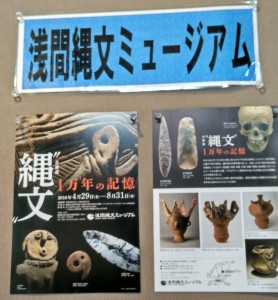 After a quick breakfast, I departed for the train station hoping to catch the 7:31 train to Karuizawa. I looked at posters in the station and suddenly noticed a poster on a special exhibition on Jomon culture titled ‘Memories of Ten Thousand Years’ in theAsama Jomon Museum.
After a quick breakfast, I departed for the train station hoping to catch the 7:31 train to Karuizawa. I looked at posters in the station and suddenly noticed a poster on a special exhibition on Jomon culture titled ‘Memories of Ten Thousand Years’ in theAsama Jomon Museum.
As the museum is about ten minutes’ walk from the station, I decided to visit it first. Unfortunately, the museum was closed till 9:30am. I sat on the floor outside the museum from 7:45 to about 8:15am. Then an elderly gentleman working in the government complex kindly invited me to go inside and take a seat in the common room with free Wi-Fi.
The Jomon period is the prehistoric Japan from about 12,000BC to about 300BC when Japan was inhabited by a hunter-gatherer culture. The oldest pottery found probably dated to around 14,000BC is perhaps the oldest in the world.
There are several periods of Jomon development: Incipient 14,000-7,500BC; Initial 7,500-4,000BC; Early 4,000-2,500BC; Middle 3,000-2,000BC; Late 2,000-1,000BC and Final 1,000-300BC. I spent over an hour looking at the Jomon pottery which are rustic but artistic, different from those I have seen in South America, China, Egypt and Greece.
I took the 10:50am train to Karuizawa. My original plan was to visit Naka-Karuizawa. As I would not have enough time to see the place and did not want to rush around, I decided to take the next shinkansen train at 11:32am to Tokyo. The journey took just over an hour and I reached my hotel – APA Hotel at Kabuchiko within walking distance from Shinjuku JR Station before 1:30pm. After leaving my suitcase in my room, I took the JR train to Harjuku and spent the afternoon strolling in Meiji Jingu, Yoyogi Park and Harjuku.
It’s my first visit toMeiji Jingu明治神宮, the most popular Shinto shrine in Japan dedicated to the deified spirits of Emperor Meiji (1852-1912) and his wife Empress Shoken (1849-1914). Emperor Meiji reigned from 1867 to his death in 1912. During the Meiji era, Japan transformed from a feudal state to a capitalist and imperial world power. He moved the capital from Kyoto to Tokyo. Surrounded by a 700,000m² forest with 120,000 evergreen trees donated from all parts of Japan, the shrine consists of two large areas: the Inner Garden with the main shrine buildings and the Outer Garden with sports arenas and the Meiji Memorial Picture Gallery. The shrine grounds are entered through two of Japan’s largest torii (shrine gates) made of cypress wood more than 1,700 years old.
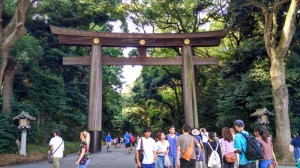 |
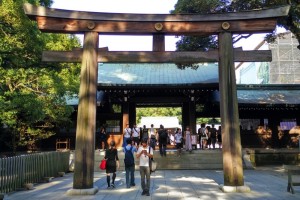 |
The shrine was first built in 1920, bombed during WWII and rebuilt in 1958. On the first days of the New Year, over three million Japanese come for the year’s first prayers (hatsumode) and traditional Shinto weddings take place here throughout the year.
I entered the shrine through the first torii near the exit of the JR Harjuku. Soon I arrived at the entrance to the Inner Garden and paid ¥500 to enter. It was the garden of ruling lords since the early Edo Period (1603-1867). There were few visitors here and I was able to soak in the atmosphere. There are several key features:
Tea House built by Emperor Meiji for Empress Shoken. The original structure was burnt down in an air raid and the existing one was rebuilt in 1958. South Pond (8,300m²) scattered with water lilies
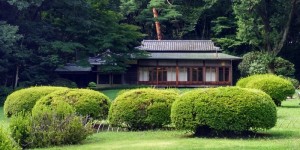 |
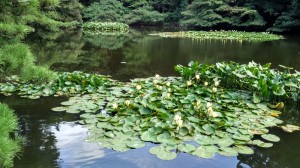 |
Iris Garden where over 1,000 iris groups of 150 original Edo-type varieties have been planted. The flower reaches full bloom in June. I saw only one in the field! Kiyomasa’s Well one of the famous wells in the Edo Period, with spring water coming out at a constant temperature of around 15°C throughout the year.
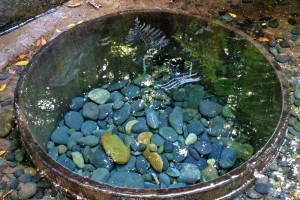 |
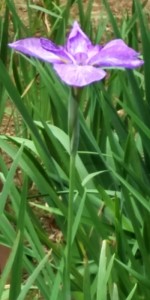 |
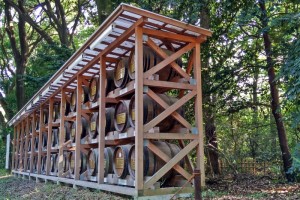 |
After leaving the garden, I followed the huge crowd to arrive at the second large torii. After along approach, I arrived at the honden (main hall). Visitors pray at the doorsteps and take a quick glimpse of the building in the inner court. In the picture gallery, I saw a series of pictures depicting the Meiji era. In preparation for the shrine’s 100th celebration in 2020, there are ongoing renovation works till October 2019. I did not visit the Treasure House or the Museum Annex.
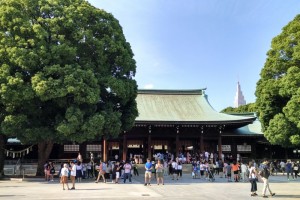 |
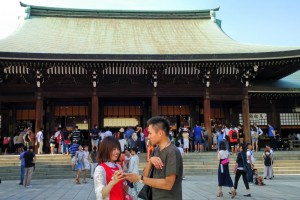 |
It was a very hot day. I had a short walk in the Yoyogi Park which is popular with young people. Across the road is the NHK Studio Park with a superb theatre which had a Rio 2016 sign outside. The man at the door opened the door for me and I ventured inside. I discovered the theatre was screening a documentary on the revival of judo in Japan. The theatre was fairly full and I sat down to watch the documentary for 15 minuts. I guess it showed the Rio 2016 games in real time whenever Japanese athletes were taking part.
Finally I took a leisure stroll in Harjuku internationally known as a centre of Japanese youth culture and fashion. I enjoy window-shopping looking at displays of chic boutiques and designers’ shops. There are numerous hair salons with young stylists. I walked in a salon and was told I had to make an appointment first. There are numerous cafés. The vibrant atmosphere is youthful and uniquely Japanese.
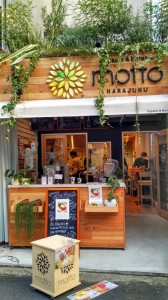 |
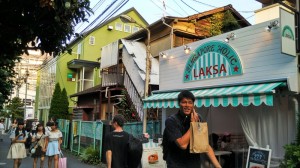 |
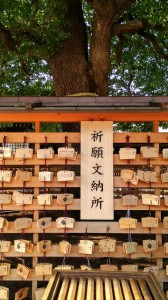 |
I returned to the hotel early so that I had time to enjoy the onsen before dinner. Located on the 28th floor, it affords fantastic sunset views of Tokyo. At 7pm, I met up with the Gang of Three and had a dinner buffet in a hot-pot restaurant. Judia who wanted to thank Kai and I for organising the trip, was the host. We were glad the total damage was less than ¥9,000.
August 12 Friday: Tokyo – Hong Kong: Travel Day
Judia, Kai and I would take the 4:20pm flight to HK. Judia and Kai would take the Narita Express from Shijuku to the airport (over ¥3,600 for a single ride). As I had already used the pass for five days, I had to pay for the trip. As I had nothing to do in the morning, I decided to take a normal JR train which cost less than ¥1,500. But this involves taking three trains i.e. Shinjuku-Tokyo-Chiba-Narita. I got on the first train shortly after 11am and did not arrive at the airport till about 2: 15pm. Judia and Kai who took the direct train at 12:40pm arriving at the check-in counter about 20 minutes later. Is the saving of ¥2,000 worthwhile? Probably not! But I learn something again. First, I would avoid Narita Airport if I have a choice. Second, I would prefer taking the cheaper and faster Skyliner train to Uedo (about 40 minutes) and find a hotel there. I like Uedo which a large park famous for sakura in the spring and has many museums. The flight departed on time and I was back in Hong Kong around 8pm.
Remarks (to add)


